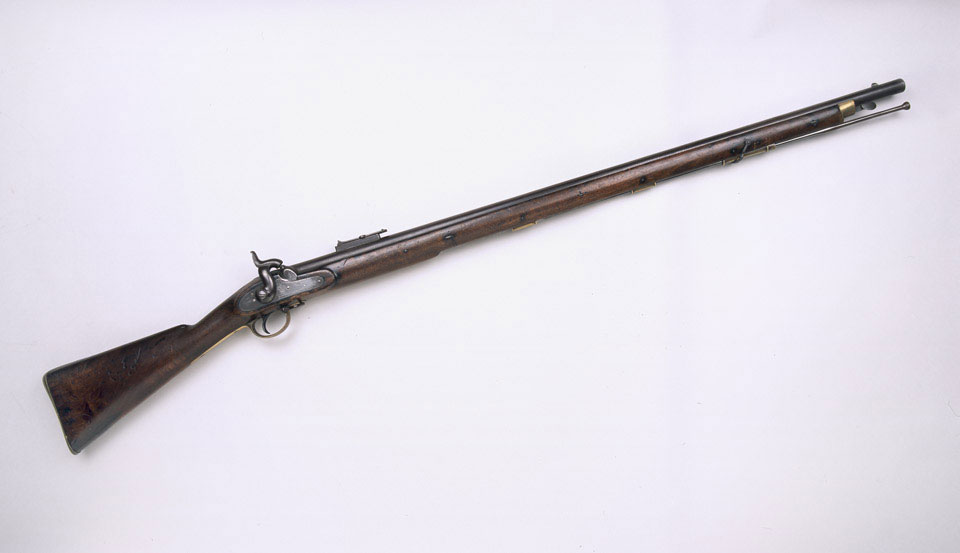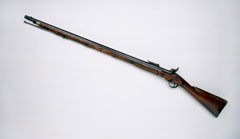
Online Collection
« Prev - 1 of 1 results - Next »
Pattern 1851 Minié .702 inch Percussion Rifle Musket, 1852
The Pattern 1851 Rifle Musket, or Minié, named after the French inventor of the rifling system, was a major leap forward in the design of the British service arm. Before its introduction in Britain, the Duke of Wellington had been adamant that the 'armament and equipment of each individual soldier should be the best that can be found' and he was consequently urged by the Marquis of Anglesey, Master General of the Ordnance, that all infantry soldiers should carry a rifle. The Duke agreed, on condition that the weight of the bullet should remain the same as the musket ball, that fifty of the new cartridges should weigh no more than sixty of the old, and that it should be named a 'rifled musket', not a rifle, to make clear the distinction between the infantry and rifle regiments. A French and a Belgian Minié were trialed against other firearms and in April 1851 the report concluded that the Belgian Minié was the superior weapon. Four British prototype Miniés were manufactured based on the Belgian design. With Wellington's approval, 500 were then manufactured for testing by ten regiments, selected as having suitable range facilities.
The ammunition of this new weapon was unique. It fired a conical-shaped projectile with a hollow base, fitted with an iron cup, which expanded on firing to take the four rifling grooves in the barrel. This vastly improved range and accuracy.
Externally the Minié is very similar to the Pattern 1842 Musket, but can be distinguished by the elevating tangent backsight, required for firing at greater range. The Minié had an effective range of about 800 yards (731 metres) and played an important role during the early battles of the Crimean War (1854-1856). This particular example is dated 1852.
NAM Accession Number
NAM. 1994-06-3-1
Copyright/Ownership
National Army Museum Copyright
Location
National Army Museum, Conflict in Europe gallery
Object URL
https://collection.nam.ac.uk/detail.php?acc=1994-06-3-1



